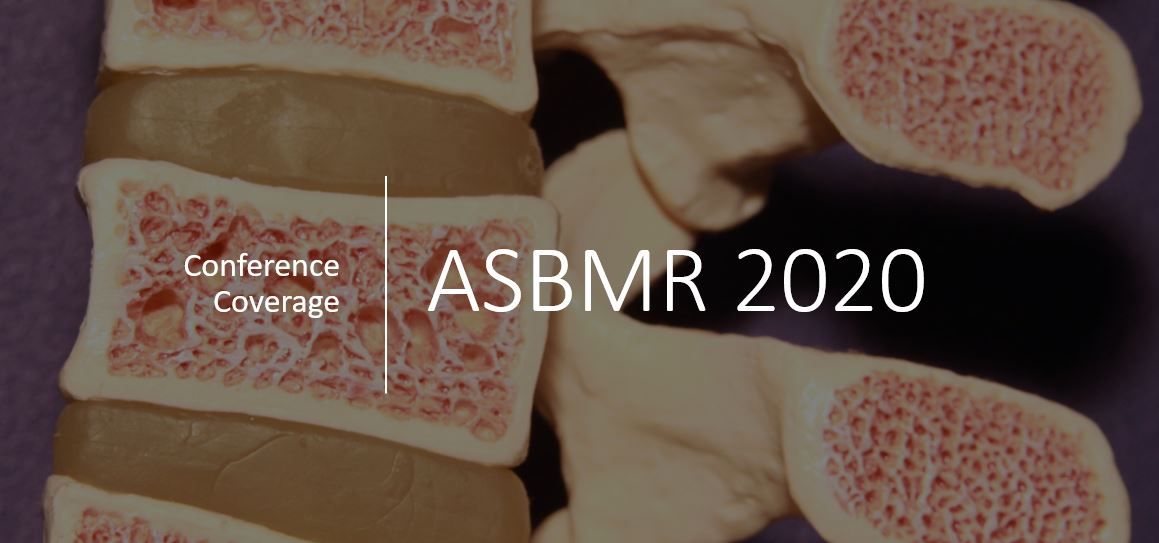Article
ASBMR
Abaloparatide Shown to Increase Bone Mineral Density
Author(s):
The osteoporosis treatment abaloparatide has been shown to increase bone mineral density of the lumbar spine, total hip and femoral neck bone in patients with osteoporosis who are at high risk for fracture, according to a study presented today at the American Society for Bone and Mineral Research annual meeting which is being held virtually through Tuesday.
(©Osteoporosis, AdobeStock)

The osteoporosis treatment abaloparatide (Tymlos, Radius) has been shown to increase bone mineral density of the lumbar spine, total hip and femoral neck bone in patients with osteoporosis who are at high risk for fracture, according to a study presented today at the American Society for Bone and Mineral Research (ASBMR) annual meeting which is being held virtually through Tuesday.
Abaloparatide is different from bisphosphonates in that it is an analog of human parathyroid hormone-related peptide [PTHrP(1-34)]. It is approved in the United States for the treatment of postmenopausal women with osteoporosis who have a high fracture risk.
In an interview with Rheumatology Network, the study’s author, Toshio Matsumoto, M.D. of Tokushima University in Japan, said, “Abaloparatide may be a drug of choice for the treatment of osteoporosis with high and imminent fracture risk.”
This was an 18-month long phase three study, called the ACTIVE-J trial, that included 206 Japanese patients (age >55 years; 186 postmenopausal women) with osteoporosis and high risk of fracture. Participants were randomly assigned to receive daily subcutaneous injection of abaloparatide or placebo.
For the primary outcome, lumbar spine bone mineral density increased 16.33 percent in the abaloparatide group and 3.78 percent in the placebo group after 18 months (p<0.001). For the secondary outcomes, total hip bone mineral density increased by 4.66 percent and 0.91 percent, respectively, while femoral neck bone mineral density increased by 5.13 percent and 0.45 percent, respectively. Meanwhile, abaloparatide rapidly and markedly increased serum PINP with a gradual and less prominent increase in C-terminal telopeptide (serum CTX). No new vertebral fractures occurred in the abaloparatide group compared with 4.3 percent of the placebo group. The incidence of new non-vertebral fractures was 2.2 percent and 2.9 percent, respectively. The safety profile was similar to that observed in the ACTIVE trial.
“These data are in support of the assumption that abaloparatide may have prevented non-vertebral fractures if enough number of patients was studied, although there was no significant difference in the incidence of non-vertebral fracture in this study,” Dr. Matsumoto said.
A separate analysis based on dual-energy X-ray absorptiometry (DXA) using the data of the ACTIVE-J trial showed potential improvement in DXA-based hip structural analysis indices at the femoral neck and intertrochanter region with abaloparatide compared with placebo at 18 months. These improvements in hip bone geometry and microstructure suggested that bone strength was also improved by abaloparatide, the authors wrote.
“Because abaloparatide showed good safety profile including myocardial infarction, abaloparatide can be used in almost all the patients with severe osteoporosis regardless of having history with cardiovascular or cerebrovascular accidents,” Dr. Matsumoto said.
_____________________
REFERENCE
[P-342] Abaloparatide, A Novel Selective Agonist of PTH/PTHrP Receptor, Increases Lumbar, Total Hip and Femoral Neck BMD in Japanese Patients with Osteoporosis -A Phase III Randomized Clinical Trial (ACTIVE-J). Toshio Matsumoto. September 11. ASMBR 2020 Annual Meeting Virtual Event.
[P-671] Abaloparatide, A Novel Selective Agonist for PTH/PTHrP Receptor, Effectively Improved Hip Geometry and Biomechanical Properties Assessed by Hip Structural Analysis in Elderly Osteoporotic Patients - Results of the Japanese Phase 3 Trial (ACTIVE-J). Teruki Sone. September 11. ASMBR 2020 Annual Meeting Virtual Event.




